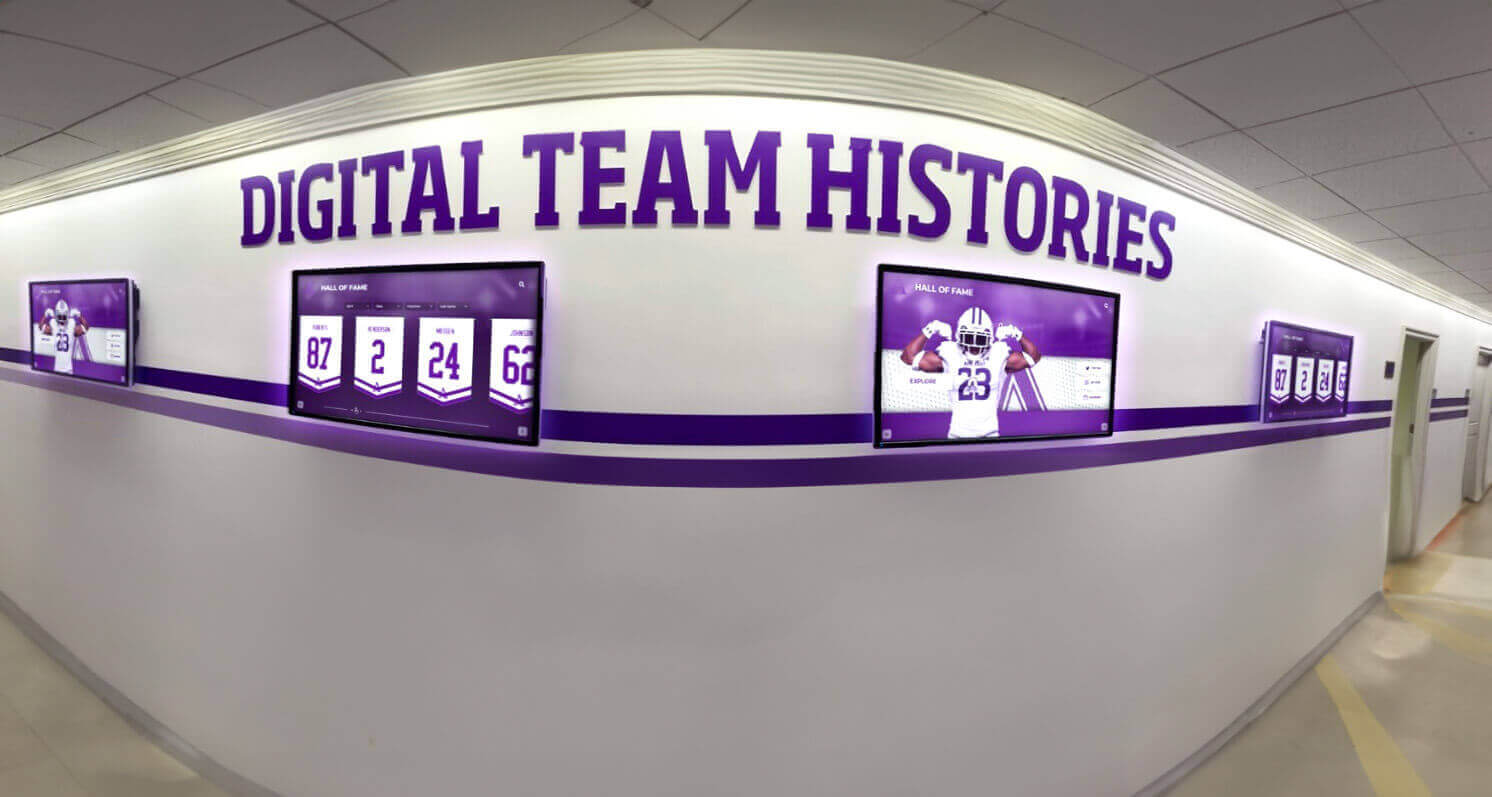Digital arts and music showcases represent transformative opportunities for schools to celebrate creative excellence while building vibrant arts cultures that inspire student participation and community engagement. From concert performances and theatrical productions to visual arts exhibitions and creative portfolios, arts achievements deserve recognition equal to athletic and academic accomplishments—yet many schools struggle to document and showcase creative work in ways that preserve performances, inspire future artists, and demonstrate the value of comprehensive arts education.
Traditional arts recognition approaches often prove inadequate for capturing creative achievement’s full richness. Physical art displays in hallways fade and get removed for newer work, performance programs get filed away and forgotten, and the stories behind creative accomplishments—the inspiration, dedication, and artistic journey—disappear as student artists graduate and move forward. Meanwhile, limited gallery space forces difficult choices about which artwork deserves display, and fleeting performances leave no permanent record for future students to study and appreciate.
This comprehensive guide explores proven strategies for creating impactful digital arts and music showcases through modern approaches that honor creative excellence while building sustainable arts culture. Whether your school recently launched arts programs or boasts decades of creative tradition, understanding how to effectively showcase artistic achievements creates lasting impact extending far beyond final curtain calls and gallery openings.
Understanding the Unique Nature of Arts and Music Achievement
Before examining specific showcase strategies, it’s essential to understand what makes arts and music recognition distinctly different from athletic or academic achievement celebration—and why creative accomplishments require specialized approaches.
The Challenge of Documenting Creative Excellence
Creative achievements present unique documentation challenges that traditional recognition displays cannot adequately address.
Performance Ephemeral Nature:
Unlike athletic competitions that produce definitive scores or academic achievements measured by grades, performing arts create experiences that exist in moments and then vanish. A stunning theatrical performance, moving musical concert, or captivating dance recital occurs once and then lives only in memory unless deliberately documented. This ephemeral quality makes recognition particularly important for preserving what would otherwise disappear completely after curtains close and audiences depart.
Traditional approaches to performance recognition—programs saved in file cabinets, photographs capturing single moments, or cast lists posted temporarily on bulletin boards—fail to convey the emotional power, technical excellence, or collaborative achievement that performances represent. Digital showcases solve this documentation challenge by enabling video integration, comprehensive cast and crew recognition, behind-the-scenes content, and narrative storytelling that collectively preserve performances more meaningfully than physical displays ever could.
Visual Arts Physical Limitations:
Visual arts face different but equally significant challenges. Student artwork displayed temporarily in hallways provides brief visibility before being returned to students or stored away to make space for newer creations. This rotation means that at any given time, only a tiny fraction of creative work receives public display while dozens or hundreds of accomplished pieces remain hidden from view.
Gallery space limitations force difficult curatorial decisions about which artwork deserves limited display opportunities. These space constraints often result in featuring only competition winners or senior advanced students while excluding valuable work from younger artists, exploratory pieces showing creative growth, or works in media that don’t display well in physical formats.

Multiple Creative Domains Requiring Recognition
Comprehensive arts showcases must address remarkably diverse creative domains, each with distinct recognition needs and presentation requirements.
Visual Arts Programs:
Visual arts encompass varied media and approaches including painting and drawing in diverse styles and techniques, sculpture and three-dimensional works, ceramics and pottery, photography and digital media, printmaking, graphic design, mixed media and collage, and installation art. Each medium presents different display considerations and requires recognition approaches suited to particular artistic characteristics.
Music Programs:
Music achievements span performance and composition across multiple contexts including concert bands and wind ensembles, orchestral programs, choral music and vocal performance, jazz bands and combos, marching bands and pageantry, chamber music groups, individual instrumental soloists, music composition and arrangement, and music technology and production. Recognition must address both ensemble collaboration and individual excellence while honoring diverse musical genres and approaches.
Theater and Drama:
Theatrical recognition extends beyond lead performers to comprehensive production teams including stage performers and actors, directors and assistant directors, technical theater and stage crew, costume design and creation, scenic design and construction, lighting design and operation, sound design and engineering, stage management and production coordination, and playwriting and dramaturgy. Effective theater recognition celebrates complete artistic teams rather than focusing exclusively on stage performers.
Dance Programs:
Dance encompasses diverse styles and approaches including classical ballet technique, modern and contemporary dance, jazz dance, tap dance, hip-hop and street dance, cultural and ethnic dance forms, choreography and composition, and dance performance production. Recognition should honor both performance excellence and creative choreography while acknowledging varied dance traditions and styles.
Solutions like Rocket Alumni Solutions provide flexible platforms designed to accommodate diverse creative domains, enabling schools to showcase all arts achievements comprehensively regardless of medium, genre, or performance format.

Why Arts Achievement Deserves Equal Recognition
Many schools inadvertently create recognition hierarchies that privilege athletic or academic achievements over creative accomplishments. This imbalance sends harmful messages about institutional values while undermining arts program development.
Equity in Achievement Celebration:
When sports championships receive prominent trophy cases, digital displays, and ceremonial celebration while arts achievements get relegated to temporary hallway displays and brief announcements, students internalize messages that athletic excellence matters more than creative accomplishment. This recognition disparity affects student choices about activity participation, parent perceptions about program quality, community understanding of educational priorities, and arts teacher morale and program enthusiasm.
Schools committed to comprehensive education recognize that creative excellence develops essential skills including creative problem-solving abilities, expressive communication capabilities, collaborative teamwork, disciplined practice and persistence, critical thinking about aesthetic choices, cultural awareness and appreciation, and emotional intelligence and empathy. These competencies prove just as valuable for student development and future success as athletic skill or academic knowledge—making equal recognition not just fair but pedagogically essential.
Building Comprehensive School Identity:
Schools known exclusively for athletic prowess or academic rigor project one-dimensional identities that limit institutional appeal and community perception. In contrast, schools recognized for excellence across academics, athletics, AND arts develop reputations as comprehensively excellent institutions that support diverse student talents and interests. This well-rounded identity strengthens recruitment across all student populations, broadens community support and engagement, enhances institutional prestige and visibility, and creates inclusive culture where all students find recognition opportunities.
Implementing equal recognition for arts achievements alongside athletic and academic accomplishments transforms school culture while demonstrating genuine commitment to comprehensive education supporting every student’s unique strengths and contributions.
Comprehensive Digital Showcase Strategies for Arts & Music
Effectively celebrating arts and music achievements requires multifaceted digital approaches addressing performance documentation, portfolio display, ongoing engagement, and accessibility that keeps creative accomplishments visible and meaningful long after performances conclude and exhibitions close.
Performance Documentation and Preservation
Capturing and preserving performance excellence requires systematic approaches ensuring that ephemeral artistic moments receive permanent documentation.
Professional Video Documentation:
High-quality video recording transforms fleeting performances into permanent archives accessible to future students, community members, and families. Effective performance documentation includes complete performance recordings capturing full artistic experiences, highlight reels showcasing particularly impressive moments or technical achievements, behind-the-scenes rehearsal footage revealing creative processes, cast and crew interviews providing personal perspectives, director commentary explaining artistic choices and interpretations, and technical achievement documentation celebrating stagecraft excellence.
Schools should invest in quality recording equipment or professional videography services for major productions and performances. Professional documentation demonstrates that arts achievements deserve production value equal to athletic event coverage while creating archives that serve educational purposes for future arts students studying previous performances.
Multi-Angle Photography:
Comprehensive photo documentation captures performance moments from varied perspectives including stage action and performance photography, backstage preparation and costume photography, technical theater elements and scenic design details, audience engagement and reaction photography, rehearsal process documentation, and formal cast portraits with costume and character.
Diverse photographic approaches create rich visual records that static single images cannot achieve while providing multiple recognition opportunities featuring different students and production elements across varied photographs.

Visual Arts Portfolio Displays
Digital platforms enable comprehensive artwork showcases impossible with physical gallery space limitations.
High-Resolution Image Galleries:
Digital art displays feature unlimited capacity for student artwork with professional presentation quality including high-resolution photography capturing fine details and textures, multiple view angles for three-dimensional works, detail shots highlighting technical skill and craftsmanship, work-in-progress documentation showing creative evolution, artist statements explaining inspiration and intentions, and technical information about media, dimensions, and techniques.
This comprehensive documentation allows complete artistic portfolios rather than forcing selection of single representative pieces for limited physical display opportunities.
Interactive Portfolio Features:
Digital showcases transform passive viewing into engaging exploration through searchable databases enabling finding work by artist, medium, or theme, filtering capabilities organizing artwork by program level or time period, zoom functionality examining fine details and techniques, related work connections showing artistic development, and comparative displays placing work within broader artistic contexts or movements.
Understanding comprehensive strategies for showcasing student achievement helps schools create engaging recognition experiences that honor creative excellence appropriately.
Virtual Exhibitions and Gallery Spaces:
Advanced digital showcases create immersive gallery experiences including curated exhibition spaces grouping thematically related works, virtual gallery walks with audio commentary or artist statements, competitive exhibition recognition highlighting juried show selections or awards, and permanent collection archives preserving exemplary works representing program history and artistic traditions.
These virtual galleries extend exhibition access globally while preserving shows permanently rather than dismantling displays after brief physical exhibition periods.
Comprehensive Recognition Content
The most effective digital arts showcases include multiple content layers telling complete stories rather than simply documenting that performances occurred or artwork was created.
Production and Performance Profiles:
Comprehensive performance recognition documents essential production information including complete cast and crew rosters with role identification, performance dates and venue information, production team leadership acknowledgment, technical theater crew recognition, and performance statistics like attendance or show counts. Beyond basic documentation, add director statements explaining artistic vision and production concepts, student reflections sharing personal performance experiences, technical achievement highlights celebrating stagecraft excellence, rehearsal process documentation showing artistic development, and historical context placing productions within program traditions.
Artist and Musician Profiles:
Individual recognition celebrating student artists includes biographical information and artistic background, portfolio galleries showcasing bodies of work across time, artistic statements explaining creative philosophy and influences, recognition of awards, competitions, and juried show acceptance, post-graduation updates tracking continued artistic pursuits, and video interviews capturing artistic perspectives in students’ own voices.
For musicians, comparable profiles include performance history documentation, repertoire lists showing musical breadth, solo and ensemble recognition, music competition results, applied lesson study information, and musical scholarship or college admission acknowledgment.
Behind-the-Scenes Content:
Arts recognition gains depth through content revealing creative processes including rehearsal documentation showing performance development, technical theater construction time-lapses, costume and prop creation processes, artistic technique demonstrations, collaborative creative processes, and problem-solving challenges and solutions encountered during production or creation.
This behind-the-scenes content demonstrates the dedication, skill, and collaborative teamwork that arts achievement requires while providing educational value for future arts students studying creative processes.
Exploring digital trophy case solutions adapted for arts recognition provides insights into comprehensive platforms specifically designed for showcasing diverse achievements with multimedia integration and engaging presentation.

Building Vibrant Arts Culture Through Recognition
Beyond recognizing achievements after they occur, successful schools intentionally cultivate arts culture where creative excellence represents expected institutional tradition rather than occasional surprise.
Visible Arts History and Tradition
Making arts history visible throughout school facilities creates constant reminders that creative excellence represents institutional tradition rather than isolated accomplishment.
Strategic Display Placement:
Position arts recognition in locations where students encounter displays daily including performing arts center lobbies welcoming audiences to events, music wing hallways where musicians practice and attend classes, art studio spaces inspiring current student artists, main building entrances demonstrating arts program value to all visitors, and cafeteria areas providing universal student exposure.
This distributed placement ensures arts recognition reaches diverse audiences while celebrating creative achievement in both specialized arts spaces and general school areas demonstrating that arts matter institution-wide.
Performance Venue Integration:
Install arts recognition prominently in performance venues where creative work occurs including theater lobbies and hallways, concert hall entrance areas, recital hall spaces, black box theater facilities, and dance studio spaces. Recognition visible in performance contexts inspires current artists while performing and demonstrates production quality standards that programs have historically maintained.
Academic Building Presence:
Extend arts recognition beyond specialized facilities into main academic buildings demonstrating that creative achievement receives institutional priority equal to academic and athletic excellence. This broader placement exposes students not involved in arts programs to creative accomplishments while reinforcing that schools value comprehensive excellence across all domains.
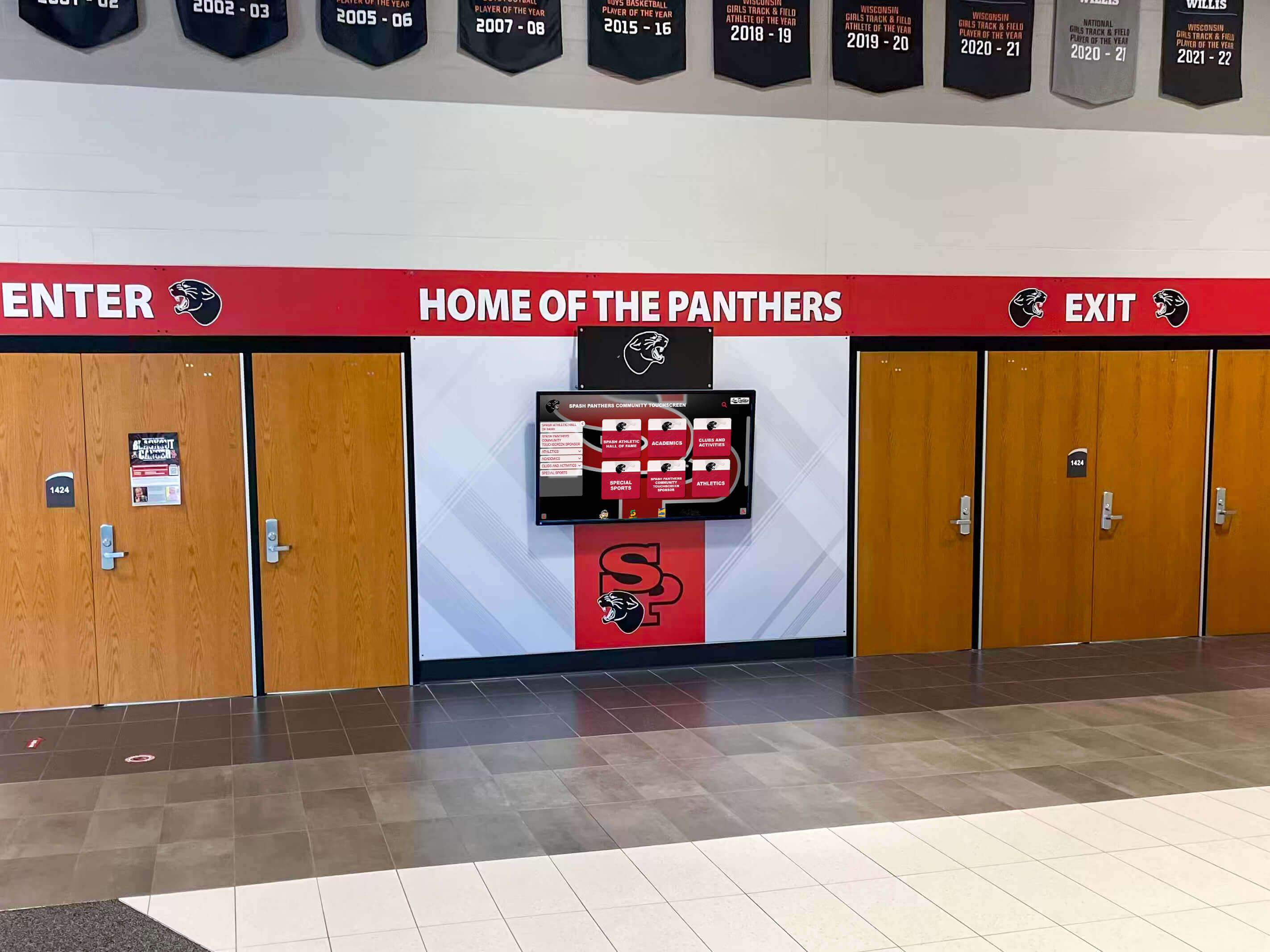
Celebrating Diverse Creative Excellence
Comprehensive arts culture recognizes varied creative achievements rather than focusing exclusively on advanced students or competition winners.
Multiple Recognition Tiers:
Effective programs celebrate achievements at varied levels including all-state and honor ensemble selections, competition winners and award recipients, juried show selections and exhibitions, program participation and milestone achievements, artistic growth and improvement recognition, collaborative contributions to ensemble success, and leadership in arts programs and organizations.
This multi-tiered approach ensures that students at varied skill levels experience recognition appropriate to their accomplishments while communicating that arts programs value participation, growth, and dedication alongside exceptional performance achievement.
Inclusive Program Representation:
Recognition should span complete arts program diversity including beginning, intermediate, and advanced students across all program levels, diverse artistic media and musical genres, technical theater and behind-the-scenes contributors, student choreographers and composers, arts program leadership roles, and community engagement and outreach initiatives.
Comprehensive representation demonstrates that all creative contributions matter while encouraging broad participation across diverse student populations and interest areas.
Alumni Arts Achievement Connection
Connecting current arts students with accomplished alumni artists creates intergenerational bonds while demonstrating that school arts experiences can launch meaningful creative careers and lifelong artistic engagement.
Alumni Artist Profiles:
Feature detailed profiles of arts program alumni including high school artistic achievements and program involvement, current professional artistic pursuits or creative careers, educational pathways and conservatory/arts college experiences, notable professional achievements and recognitions, and reflections on how school arts experiences shaped their artistic development and career paths.
These alumni profiles provide aspirational examples while demonstrating tangible outcomes of comprehensive arts education. Students seeing alumni who pursued professional creative careers or maintained artistic engagement alongside other professions understand that arts skills provide value extending far beyond school years.
Alumni Return Events:
Organize events bringing arts alumni back to campus during current productions and performances including alumni attendance at current shows with backstage meet-and-greets, alumni participation in masterclass sessions sharing professional expertise, alumni panel discussions about creative careers and artistic pathways, and collaborative performances featuring current students alongside returning alumni artists.
These connections create mentorship relationships while strengthening alumni engagement with current arts programs and demonstrating program tradition spanning generations.
Understanding effective alumni engagement strategies helps schools create lasting connections that strengthen program culture while building support networks for current arts students.
Program-Specific Showcase Approaches
While general recognition principles apply across creative disciplines, individual arts programs have unique characteristics requiring tailored showcase approaches.
Visual Arts Showcase Best Practices
Visual arts recognition benefits from presentation approaches specifically suited to static artwork and creative portfolios.
Medium-Specific Documentation:
Different artistic media require varied documentation approaches including painting and drawing documentation with detail shots revealing brushwork and technique, sculpture photography from multiple angles showing three-dimensional form, ceramic work documentation including functional testing for utilitarian pieces, photography presented with technical information about capture process, digital media preserved in native digital formats when possible, and installation art documented through both photography and video capturing viewer experience.
Medium-appropriate documentation ensures artwork receives presentation suited to particular artistic characteristics while maintaining professional quality across varied creative approaches.
Artistic Development Narratives:
Beyond finished work documentation, show artistic development through sketch and planning documentation revealing creative processes, work-in-progress photography showing evolutionary stages, technique demonstration videos explaining artistic approaches, comparative displays showing style development across time, and artist commentary discussing creative decisions and problem-solving.
This developmental content demonstrates that artistic excellence emerges through sustained practice, experimentation, and refinement rather than sudden inspiration alone—providing valuable education for aspiring artists while honoring the dedication that accomplished work represents.
Competition and Exhibition Recognition:
Celebrate external validation of artistic excellence including juried show acceptance and awards, scholastic arts competition recognition at regional, state, and national levels, gallery exhibition opportunities beyond school, arts scholarship and portfolio acceptance, and AP Studio Art accomplishments and scores.
External recognition provides objective excellence indicators while celebrating how student work compares within broader artistic contexts beyond individual schools.
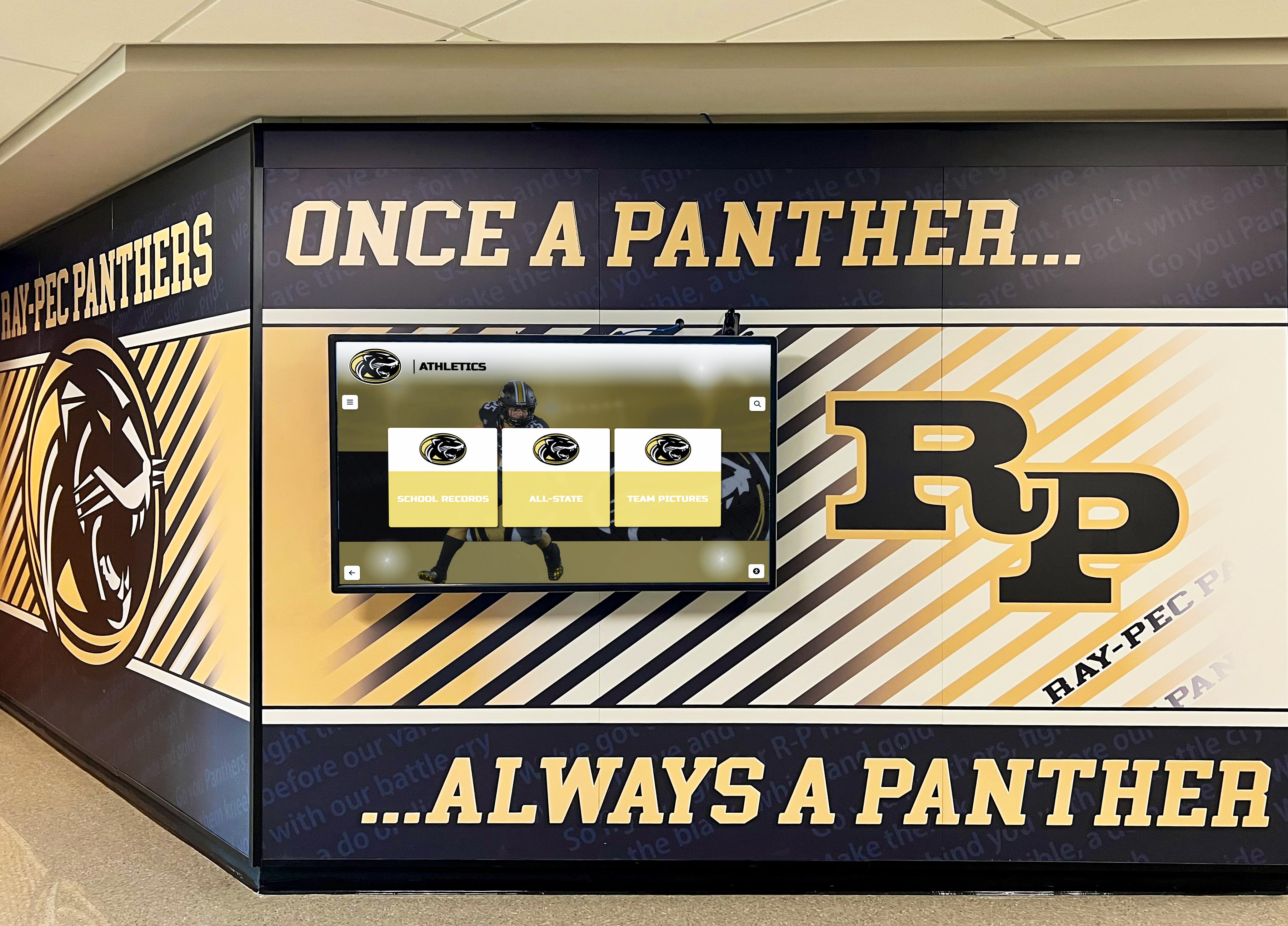
Music Program Recognition Strategies
Music achievement celebration addresses both performance excellence and comprehensive program participation across varied musical contexts.
Ensemble Achievement Recognition:
Honor collective musical excellence through complete ensemble rosters for each performance group, concert performance documentation with video and audio recordings, repertoire lists showing musical breadth and challenge levels, competition and festival results with ratings and rankings, guest conductor and clinician acknowledgment, collaborative performances with community or professional musicians, and tour documentation for traveling ensembles.
Ensemble recognition celebrates collaborative musical achievement while documenting program offerings and performance quality standards.
Individual Musician Recognition:
Within ensemble contexts, acknowledge individual excellence including section leadership and principal player recognition, solo performance opportunities and features, all-state and honor ensemble selections, applied lesson study and private instruction acknowledgment, music theory and composition achievements, and technical proficiency milestones and accomplishments.
Balancing ensemble and individual recognition ensures comprehensive acknowledgment while maintaining emphasis on collaborative musical performance that ensemble programs emphasize.
Music Competition Documentation:
Celebrate competitive achievement comprehensively including solo and ensemble contest ratings, chair placement audition results for honor groups, concerto competition winners, composition contest recognition, music scholarship audition results, and jazz/contemporary performance festival participation.
These competitive achievements provide objective performance quality indicators while recognizing student dedication to pursuing excellence through audition and contest participation.
Exploring student awards recognition programs provides additional guidance for celebrating achievement across diverse creative disciplines with consistent quality and institutional support.
Theater and Drama Recognition Excellence
Theatrical recognition requires comprehensive approaches celebrating complete production teams rather than focusing exclusively on stage performers.
Complete Cast and Crew Recognition:
Theater recognition must address all production contributors including complete cast lists with character identification, technical theater crews (lighting, sound, scenic, properties), costume design and construction teams, stage management and production coordination, music direction for musical productions, choreography for movement-based theater, dramaturgy and script work, publicity and marketing teams, and house management and front-of-house operations.
This comprehensive recognition demonstrates that successful theatrical productions require collaborative contributions from dozens of students working in diverse specialized roles—celebrating complete artistic teams rather than privileged few stage performers.
Production Documentation:
Thorough theatrical documentation includes complete performance recordings capturing full productions, photography from dress rehearsals and performances, backstage and technical theater documentation, rehearsal process time-lapse or documentation, scenic and costume design renderings alongside realized production photos, program materials and show documentation, and audience and critical response documentation.
Comprehensive documentation preserves productions as complete artistic experiences while providing educational resources for future theater students studying previous production approaches and technical solutions.
Technical Theater Showcase:
Technical theater deserves recognition equal to performance achievement including lighting design documentation with cue-by-cue explanations, scenic design process from concept through construction, sound design elements and audio engineering, costume design portfolios showing complete production looks, properties creation and sourcing documentation, and special effects or theatrical technology innovations.
Celebrating technical excellence demonstrates that stagecraft represents artistic achievement requiring skill, creativity, and dedication equal to stage performance while encouraging broader student participation across all theatrical specializations.
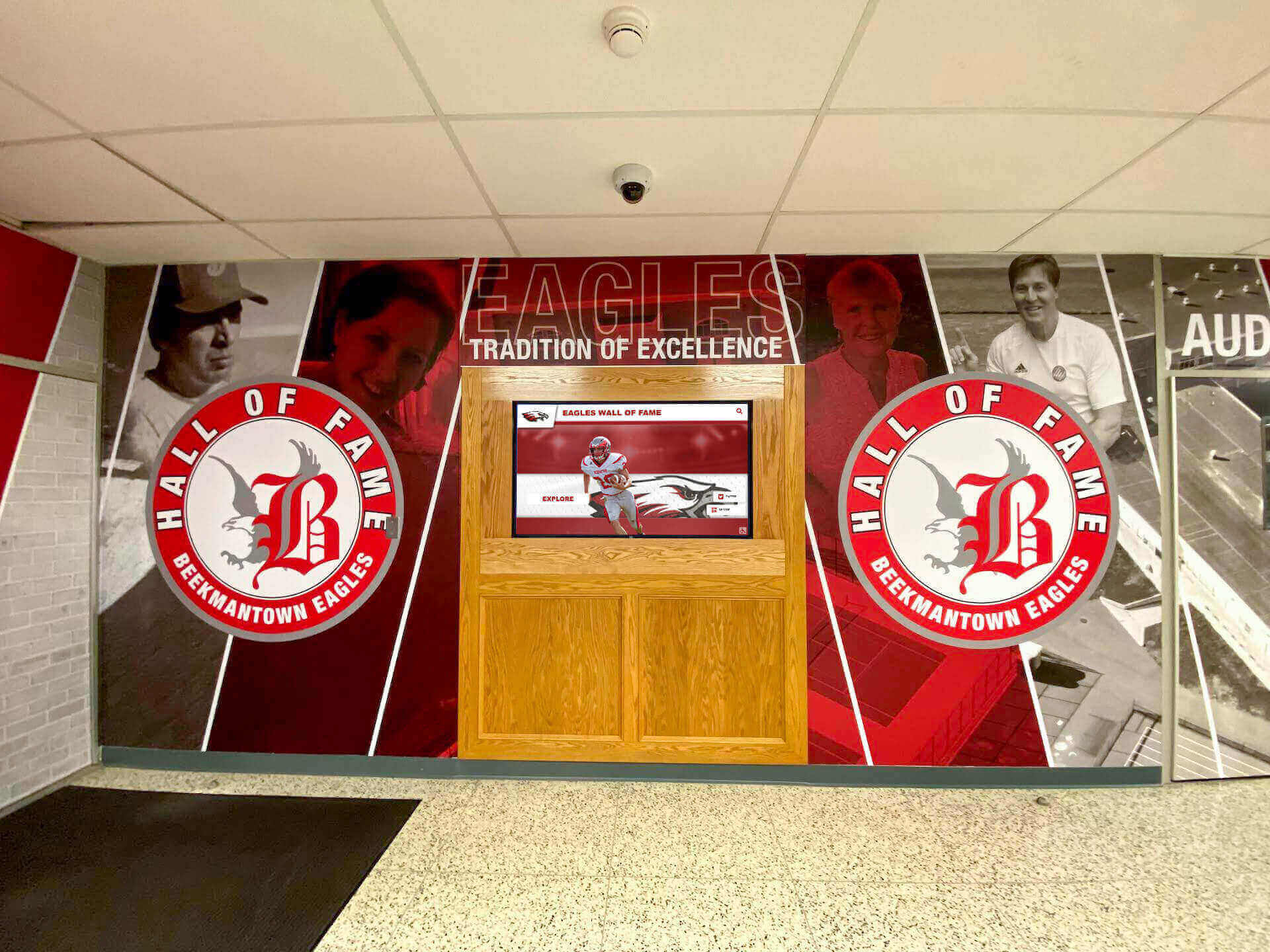
Modern Technology for Digital Arts Showcases
Digital recognition technology transforms how schools celebrate creative excellence by eliminating traditional limitations while introducing capabilities that enhance engagement and accessibility.
Interactive Multimedia Display Capabilities
Digital platforms provide dynamic alternatives to static physical displays with advantages that make comprehensive creative achievement celebration practical regardless of program size or artistic output volume.
Unlimited Recognition Capacity:
Digital systems accommodate unlimited artistic works and performances across all creative disciplines and years without physical space constraints. Schools never face difficult decisions about which artwork deserves limited gallery space or which performances merit documentation—every creative achievement receives comprehensive recognition with professional presentation quality.
Rich Multimedia Integration:
Digital showcases incorporate media formats impossible with traditional displays including high-resolution artwork photography with zoom capabilities, complete performance video recordings, audio recordings of musical performances, artist and musician interview videos, animation and digital media in native formats, interactive portfolio browsing interfaces, and behind-the-scenes creative process documentation.
This multimedia capability creates engaging experiences that honor creative work more comprehensively than static displays could ever achieve while making recognition accessible to broader audiences beyond those who can attend physical exhibitions or live performances.
Real-Time Content Updates:
Add new creative achievement recognition immediately after performances or artwork completion without installation delays, physical production requirements, or gallery space limitations. Update capability ensures recognition remains current while community excitement about creative accomplishments remains high and student artists experience prompt acknowledgment of their efforts.
Search and Discovery Features:
Allow visitors to explore creative work through powerful search by artist name, artwork title, performance date, creative medium, artistic genre, or program level. Filtering enables personalized discovery letting individuals quickly find specific artists, productions, or creative works they’re interested in exploring while encouraging serendipitous discovery of unfamiliar work through browsing interfaces.
Exploring touchscreen recognition solutions helps schools understand modern platforms specifically designed for educational programs with flexible content support accommodating diverse creative achievement types and media formats.
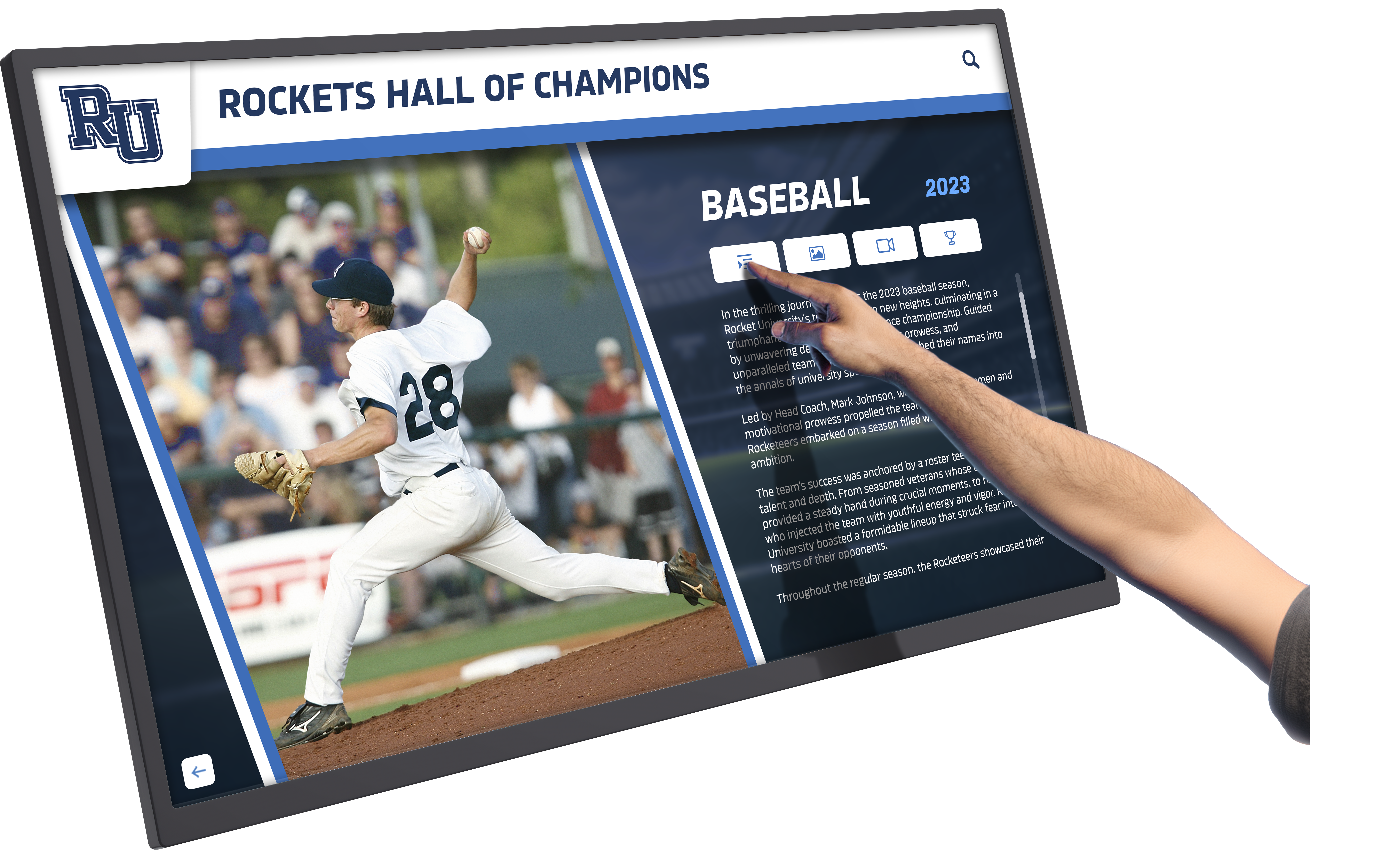
Cloud-Based Content Management
Modern recognition systems feature intuitive management platforms enabling arts faculty to update creative achievement content easily from any location without technical expertise.
User-Friendly Interfaces:
Content management systems designed for non-technical users enable art teachers, music directors, drama instructors, or administrative staff to add performances, upload artwork photography, incorporate videos, and modify content through simple web-based interfaces requiring no programming knowledge or technical training beyond basic computer literacy.
Remote Update Capability:
Manage creative achievement content from any internet-connected device including office computers, home laptops, tablets, or smartphones. Remote management means staff can add performance recognition immediately after productions conclude or upload artwork documentation as soon as photography is completed without needing to access physical display locations or coordinate with technical support personnel.
Collaborative Content Creation:
Allow multiple faculty members to contribute content with role-based permissions controlling who can publish, edit, or review materials. Collaborative capability distributes workload while maintaining quality control through approval workflows when desired.
Template-Based Consistency:
Content templates ensure achievement entries maintain consistent formatting, required information fields, and professional presentation quality regardless of who creates content. Templates streamline content creation while maintaining standards across varied contributors and creative disciplines.
Mobile and Web Accessibility
Digital arts showcases extend far beyond physical campus displays through web platforms and mobile access making creative work accessible globally.
Online Portfolio Access:
Web-based interfaces enable families, alumni, community members, and prospective students worldwide to explore arts achievements remotely. Online platforms prove particularly valuable for alumni who may never physically return to campus but maintain interest in program developments, families sharing student accomplishments with extended relatives, and prospective families researching arts program quality during school selection processes.
Social Media Integration:
Built-in sharing functionality enables students to instantly share creative achievements to personal social media accounts. When artists share gallery features, musicians share performance videos, or theater students share production documentation to Instagram, Facebook, or other platforms, these posts extend institutional visibility to hundreds or thousands of connections while celebrating individual accomplishment through contemporary communication channels.
Mobile-Responsive Design:
Ensure arts showcase interfaces work seamlessly across devices including desktop computers, tablets, and smartphones with touch-optimized navigation. Mobile accessibility proves essential for contemporary audiences who increasingly access content through smartphones rather than desktop computers.
Implementing Digital Arts & Music Showcase Programs
Schools ready to enhance creative achievement recognition should follow systematic implementation approaches ensuring comprehensive coverage, sustainable operations, and maximum impact.
Planning and Needs Assessment
Begin by thoroughly evaluating current arts recognition approaches, identifying gaps, and establishing clear objectives for enhanced creative achievement celebration.
Current State Analysis:
Document existing recognition methods including physical display inventories, performance documentation practices, artwork preservation approaches, and current engagement levels. Identify what works well worth preserving alongside limitations requiring solutions through enhanced systems.
Stakeholder Input:
Gather perspectives from arts faculty about recognition priorities and content management preferences, students regarding recognition features they find most engaging or valuable, families about accessibility and information desires, alumni reflecting on how enhanced recognition might strengthen their program connections, and administrators concerning budget parameters and institutional priorities.
This comprehensive input ensures implementation addresses authentic needs while building stakeholder support for new approaches.
Goal Setting:
Establish clear, measurable objectives for arts showcase programs including specific recognition coverage goals (percentages of performances documented, artwork featured, or students acknowledged), engagement targets for physical displays and web platforms, timeline objectives for historical content addition, and cultural impact aspirations like increased arts program participation or community engagement.
Clear objectives guide implementation decisions while providing assessment frameworks for evaluating program success after launch.
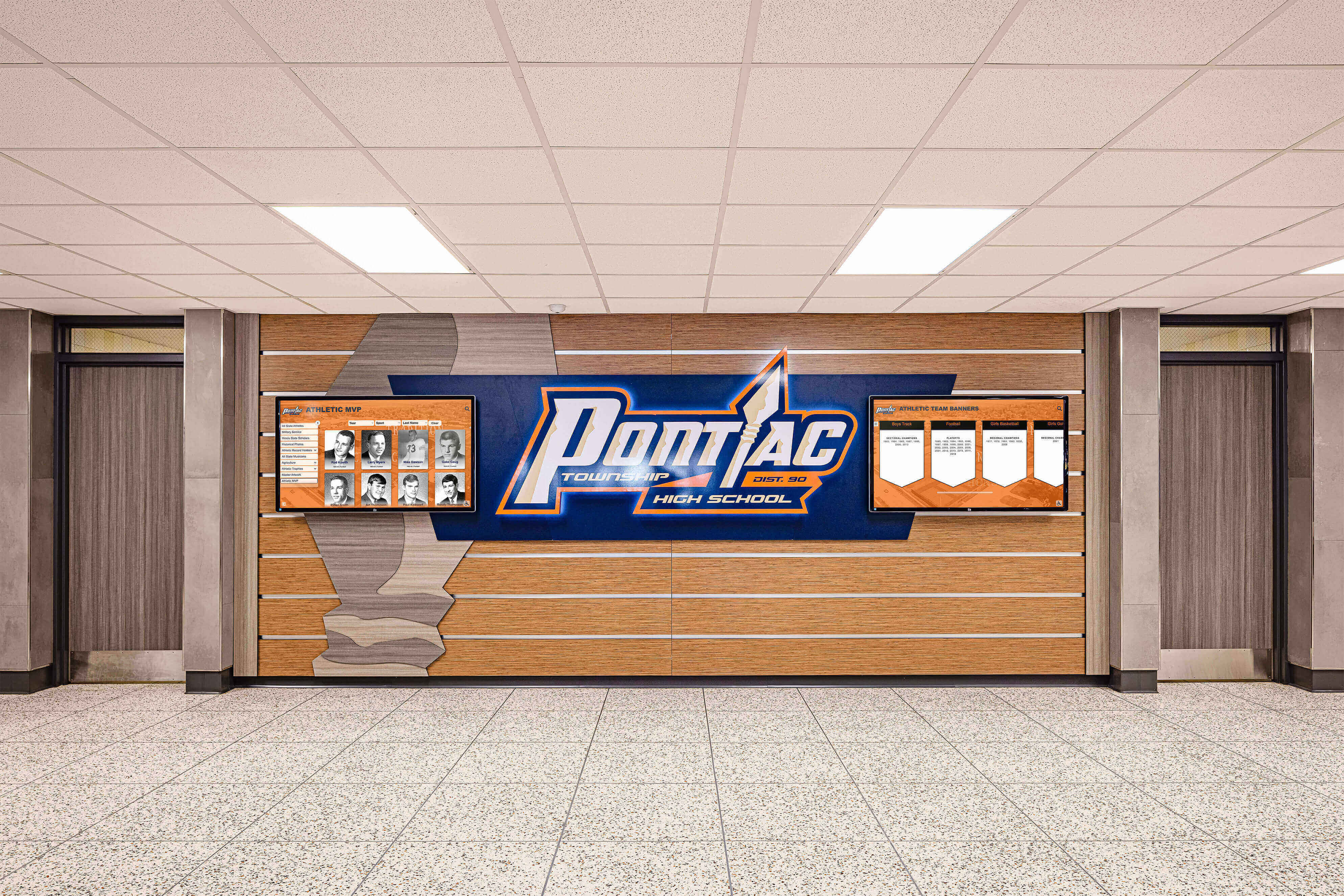
Content Development Strategies
Comprehensive arts showcases require systematic content development ensuring quality, consistency, and sustainability.
Photography and Documentation Standards:
Establish quality standards for all content including minimum image resolution specifications for artwork photography, video quality requirements for performance documentation, audio recording standards for musical performances, and consistent metadata requirements for search functionality.
Quality standards ensure professional presentation while preventing substandard content from diminishing overall showcase credibility.
Content Creation Workflows:
Develop systematic processes for generating recognition content including scheduled photography sessions for artwork documentation, videography arrangements for all major performances and exhibitions, assignment protocols for technical crew documentation roles, interview scheduling for artist and performer commentary, and editing workflows for preparing content before publication.
Systematic approaches prevent content gaps while distributing workload manageably across responsible personnel.
Phased Implementation Timeline:
Most schools implement creative recognition incrementally including current academic year coverage as Phase 1 establishing baseline content and testing workflows, recent historical content from past 3-5 years as Phase 2 providing depth and demonstrating program development, significant historical achievements as Phase 3 celebrating program traditions and notable alumni artists, and comprehensive historical documentation as ongoing Phase 4 systematically working backward through complete program history.
Phased approaches allow earlier launches demonstrating value while distributing content development workload over extended periods making large projects manageable within typical arts department resource constraints.
Promotion and Community Engagement
Even excellent arts showcases require ongoing promotion ensuring target audiences discover and engage with creative achievement recognition.
Launch Campaign:
Communicate showcase program launches through school announcements and assemblies, parent communications and arts program newsletters, local media coverage featuring arts recognition innovation, social media campaigns highlighting showcase features and featured content, and open house events where families can explore new recognition systems.
Comprehensive launch promotion builds awareness while generating initial engagement that establishes usage patterns continuing long-term.
Ongoing Promotion Strategies:
Maintain visibility through regular social media features highlighting recently added content, email newsletters to arts program families showcasing new performances or artwork, event-based promotion during performances directing audiences to explore archives, classroom integration where teachers reference showcase content as educational resources, and student ambassador programs training arts students to demonstrate showcase features and encourage peer exploration.
Sustained promotion ensures showcases remain visible and relevant rather than launching with initial enthusiasm that gradually fades without ongoing attention.
Understanding comprehensive school pride building strategies helps schools leverage creative achievement recognition within broader culture-building initiatives that celebrate excellence across all domains while strengthening institutional identity and community engagement.
Measuring Arts Showcase Impact
Arts program leaders must demonstrate recognition program value justifying continued investment while identifying improvement opportunities that enhance effectiveness.
Quantitative Measurement Approaches
Track specific metrics connecting creative achievement recognition to desired outcomes across multiple program dimensions.
Participation and Enrollment Metrics:
Monitor year-over-year participation numbers across arts programs. Increasing enrollment suggests recognition effectively communicates program excellence and value while inspiring student involvement. Track participation trends in beginning courses, advanced programs, co-curricular arts activities, and arts competition participation to understand recognition impact across program levels.
Engagement Analytics:
For digital showcases, measure interaction patterns including session counts showing how often displays are accessed, average engagement duration indicating content compelling quality, most-viewed content revealing which achievements resonate most strongly, search patterns showing how visitors explore content, and web platform traffic demonstrating remote access and broader reach.
Recognition Coverage:
Assess recognition comprehensiveness including percentage of performances documented, proportion of student artwork featured, technical theater acknowledgment completeness, and historical content coverage depth.
Coverage metrics ensure equitable recognition reaching all creative disciplines, program levels, and achievement types rather than inadvertently privileging certain programs or students.
Community Awareness:
Track broader impact indicators including local media coverage frequency mentioning arts programs, social media reach and engagement with shared creative achievement content, performance attendance trends, community arts event participation, and prospective family arts program inquiries during admissions processes.
Growing community awareness suggests that enhanced recognition successfully elevates arts program visibility and perceived value beyond school boundaries.
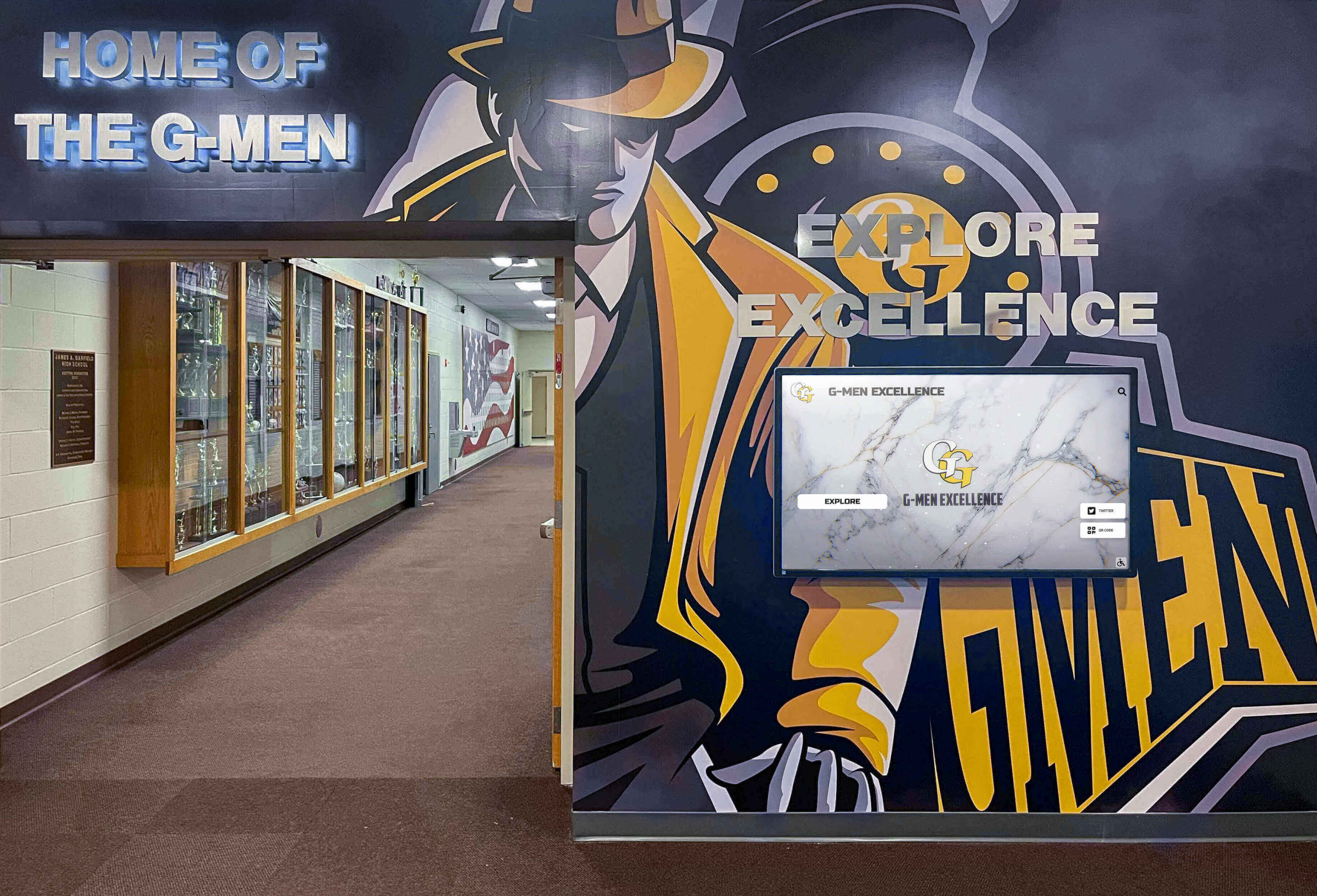
Qualitative Feedback Collection
Numbers provide important measures, but qualitative feedback offers deeper understanding of how creative achievement recognition influences stakeholder experiences and perceptions.
Student Artist Surveys:
Gather perspectives from student artists about whether recognition influences creative motivation, pride in artistic work, program participation decisions, or aspirations for continued artistic development. Direct student feedback reveals recognition’s most important outcome—impact on student experiences and artistic identity development.
Arts Faculty Input:
Solicit teacher perspectives about recognition program utility, ease of content management, observed impacts on student motivation or program culture, and suggestions for enhancement. Faculty insights reveal operational effectiveness while identifying improvement opportunities that make programs more valuable and sustainable.
Family Feedback:
Collect parent and family perspectives through surveys or informal interviews about recognition quality, accessibility of creative work showcases, influence on family engagement with arts programs, and value for sharing student accomplishments with extended family networks.
Family satisfaction indicates whether showcases meet their information needs while strengthening home-school connections around creative education.
Alumni Response:
Request alumni artist feedback about how enhanced recognition affects their connections to programs and institutions, whether they explore current student work through web-accessible showcases, and if recognition influences their willingness to engage with programs through mentorship, attendance, or support.
Alumni engagement demonstrates recognition’s power to maintain lasting connections between graduates and arts programs that shaped their creative development.
Conclusion: Transforming Creative Achievement Recognition for Future Generations
Digital arts and music showcases represent fundamental transformation in how schools celebrate creative excellence and build vibrant arts cultures. By replacing space-constrained physical displays and ephemeral performances with comprehensive digital recognition systems, schools can finally honor all artistic accomplishments thoroughly while creating engaging experiences that inspire current students, strengthen community connections, and preserve creative legacies permanently.
The transition from traditional arts recognition to digital showcase systems requires thoughtful planning, systematic content development, and ongoing management. But schools implementing these transformative approaches consistently report remarkable benefits including dramatically increased arts program engagement and participation, substantially enhanced community awareness of creative excellence, comprehensive recognition previously impossible with physical limitations, and cultural shifts toward valuing arts achievement equally alongside academic and athletic accomplishments.
As technology continues evolving, digital showcase capabilities will expand further, providing even more powerful tools for creative achievement celebration and community engagement. Schools implementing comprehensive systems today position themselves at the forefront of arts education innovation while creating flexible platforms that will grow and adapt for decades to come.
The most successful digital arts and music showcases demonstrate several key characteristics that distinguish them from minimal recognition approaches including comprehensive coverage across all creative disciplines ensuring equity, consistent quality standards maintaining professionalism, authentic storytelling capturing what makes creative work special, accessible design serving diverse audiences including families and community members, sustainable management procedures maintaining currency despite staff transitions, and strategic integration within broader arts program development and school culture initiatives.
Schools that invest strategically in arts and music recognition reap substantial benefits extending far beyond simple acknowledgment including motivational environments where creative excellence is expected and celebrated, recruitment advantages differentiating programs from competitors, community engagement strengthening institutional support for arts education, alumni connections generating ongoing involvement and advocacy, and most importantly, vibrant arts culture where sustained creative excellence becomes institutional identity rather than occasional occurrence.
Student artists, musicians, actors, dancers, and creative contributors who achieve excellence deserve recognition that doesn’t fade when gallery exhibitions close, disappear when performance curtains fall, or get forgotten when programs conclude and new seasons begin. They deserve recognition that inspires for generations, preserves creative legacies permanently, and honors the remarkable dedication required to achieve creative excellence in school arts programs.
Ready to transform how your school celebrates arts and music achievement? Solutions like Rocket Alumni Solutions provide comprehensive platforms specifically designed for educational creative programs, combining intuitive technology with professional support and proven best practices. Every performance, every artwork, every creative contribution represents extraordinary achievement—modern recognition systems ensure these accomplishments receive the lasting honor they truly deserve.
